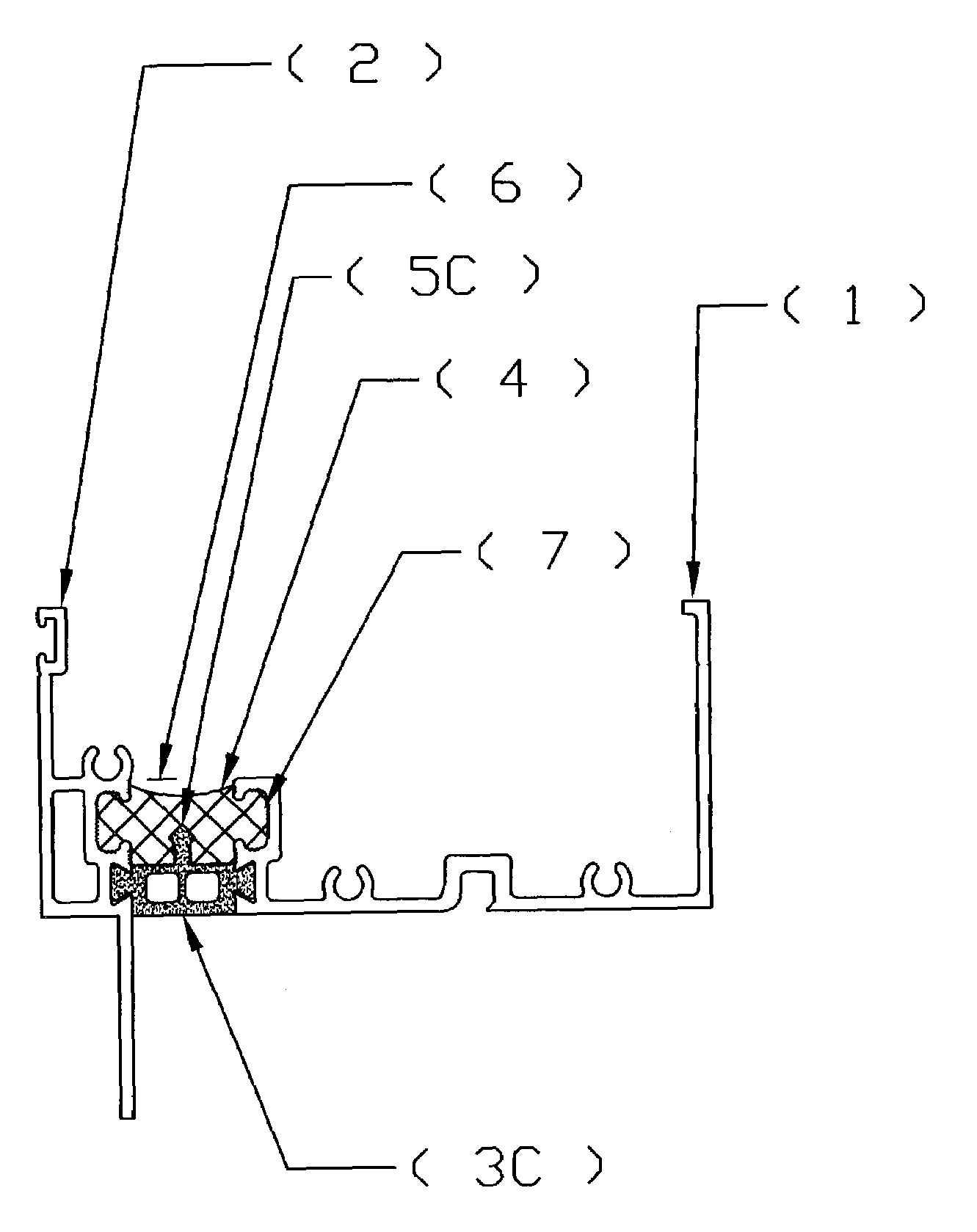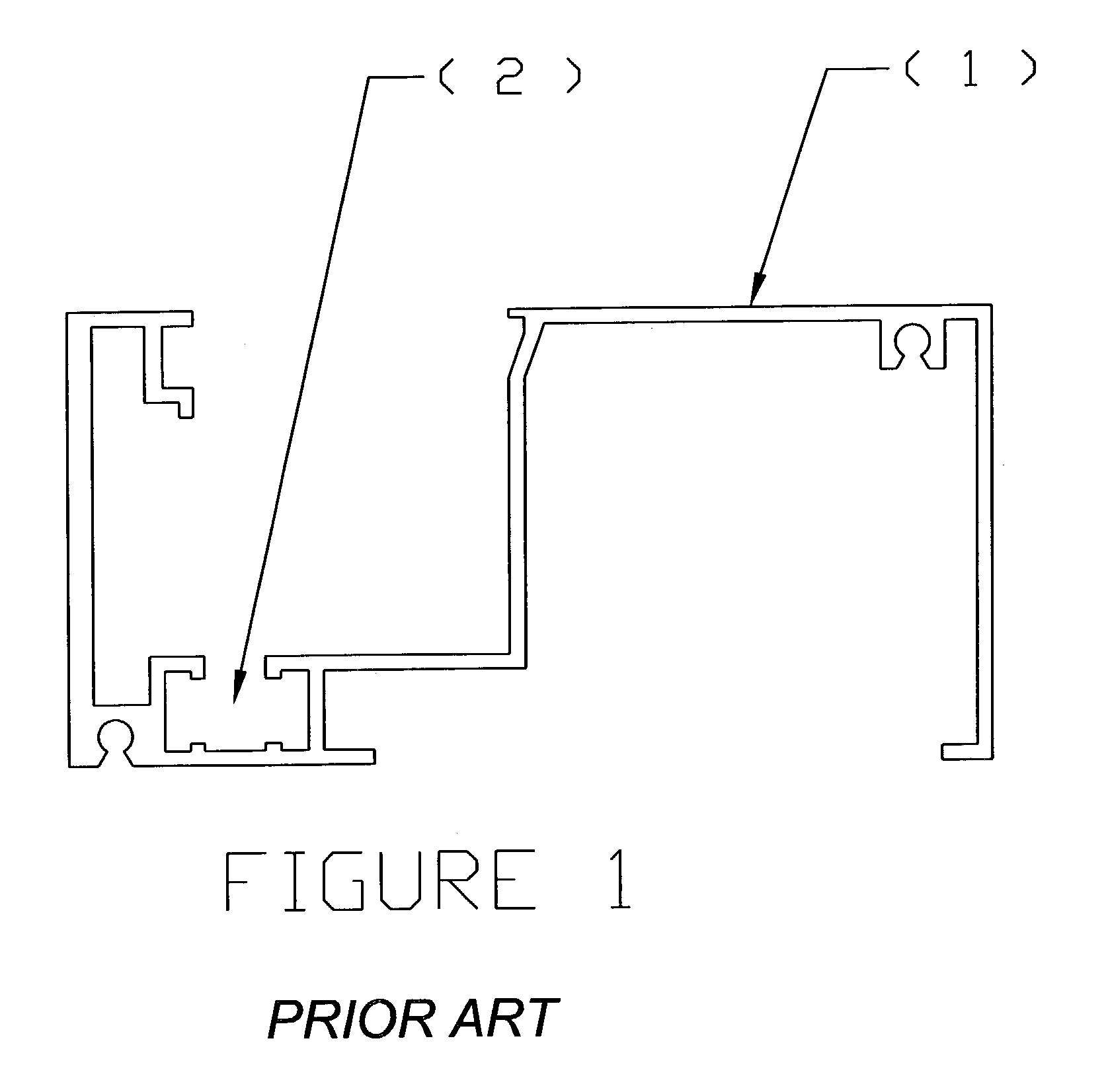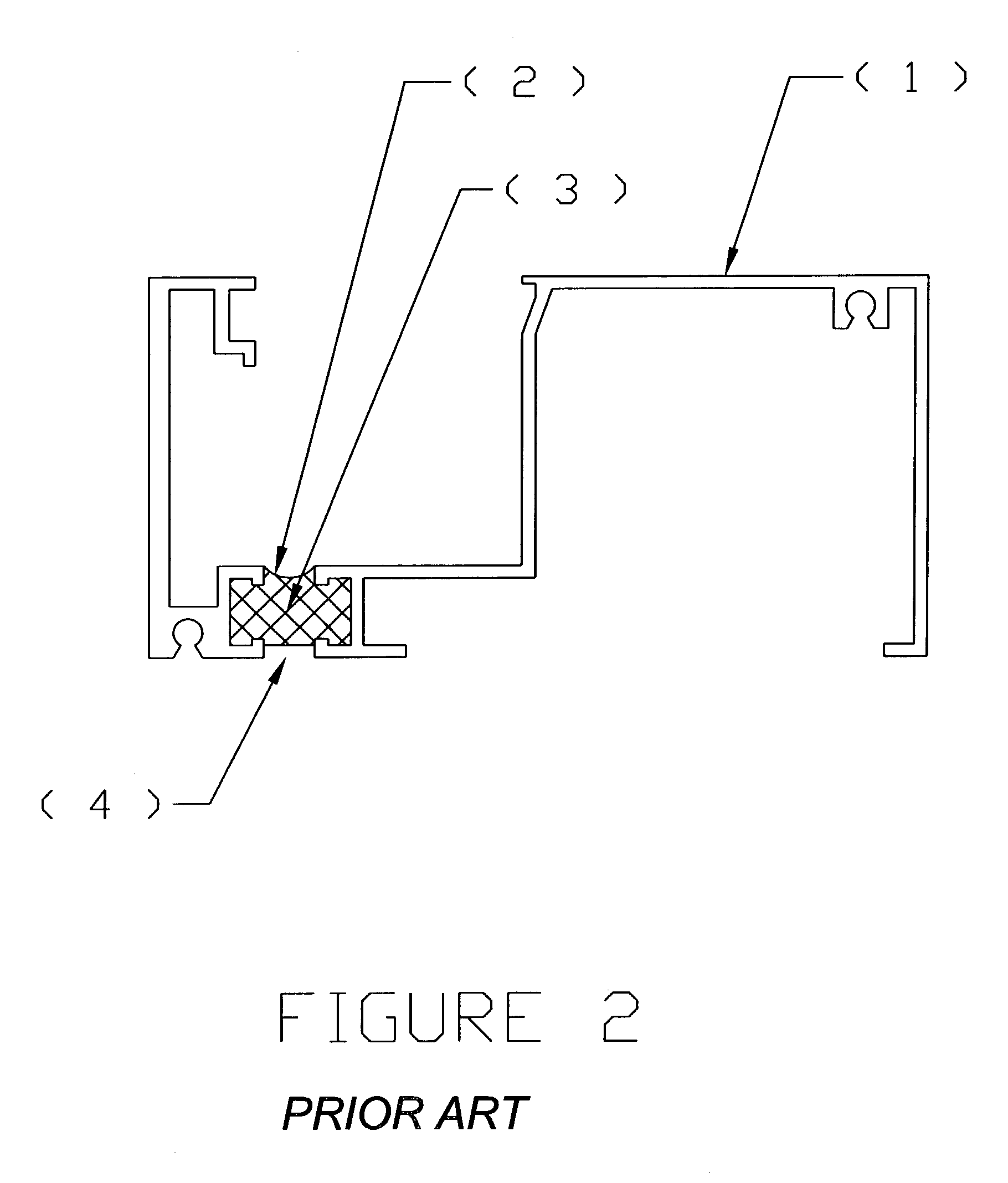Thermal breaking system for construction materials and the like
- Summary
- Abstract
- Description
- Claims
- Application Information
AI Technical Summary
Benefits of technology
Problems solved by technology
Method used
Image
Examples
Embodiment Construction
[0019]FIGS. 3, 4 and 5 show cross sections of a composite section that can be used in the manufacture of windows, door, and other construction and building components.
[0020]In the preferred embodiment, the thermal break system is made of a first (1) and a second (2) portion. Said portions can be made of, for example, aluminum or an aluminum alloy. Said portions correspond to the selections of the building component, i.e., windows, doors, etc., for which an interruption in the continuity of the building component is desired. Said interruption, of course, confers the benefit of lowering thermal conduction and enhancing the acoustical properties of the building components.
[0021]Interposed between said first and second portions is a thermal insert (3A, B, C). The thermal insert is preferably made of a PVC, but can be made of nylon, polyamide, or fiberglass. The thermal insert is interposed between the first and second portions to define a longitudinal channel (6) having an opening. Pref...
PUM
 Login to View More
Login to View More Abstract
Description
Claims
Application Information
 Login to View More
Login to View More - R&D
- Intellectual Property
- Life Sciences
- Materials
- Tech Scout
- Unparalleled Data Quality
- Higher Quality Content
- 60% Fewer Hallucinations
Browse by: Latest US Patents, China's latest patents, Technical Efficacy Thesaurus, Application Domain, Technology Topic, Popular Technical Reports.
© 2025 PatSnap. All rights reserved.Legal|Privacy policy|Modern Slavery Act Transparency Statement|Sitemap|About US| Contact US: help@patsnap.com



